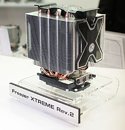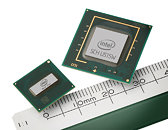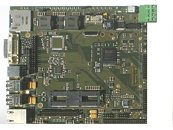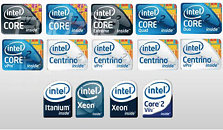
GIGABYTE to Demonstrate 10-inch Mobile PCs at CeBIT 2009
After the heated feedback of the M912 Series with swivel screens that were launched in 2008, GIGABYTE will demonstrate various 10.1-inch mobile PCs at the CeBIT 2009 held in Hannover according to public expectation. These include the Touch Note M1028 also equipped with the swivel screen, the Thin Note M1024 which is only 890 grams and 2cm thick, and the Booktop M1022 equipped with the exclusive docking station for turning the Booktop into a desktop. These models will again display GIGABYTE's excelling R&D power. Also, the new-generation Intel Centrino 2 notebook PCs with different screen sizes will be the focus at the present CeBIT. As one of the leading brands in notebook PCs, GIGABYTE will surely bring refreshing models to the public in 2009.
Touch Note M1028: With a fashionable and elegant appearance, the Touch Note M1028 has a golden coffee top cover of exquisite quality and a 10.1-inch LED backlight swivel screen. It is a combination of notebook and tablet PCs that delivers multiple application modes for convenience use. The two resolution options for this model include 1024x600 and 1366x768, which are the mainstreams of the market. In addition to the mobile features like Wi-Fi, Bluetooth and Express Card slot. What is noteworthy is that the M1028 is equipped with a wide range of crafty designs from GIGABYTE. Besides the 92% full-scale keyboard with premium quality, the M1028 supports the embedded 3.5G (HSDPA) module for users to experience the wonder of mobile life.
Touch Note M1028: With a fashionable and elegant appearance, the Touch Note M1028 has a golden coffee top cover of exquisite quality and a 10.1-inch LED backlight swivel screen. It is a combination of notebook and tablet PCs that delivers multiple application modes for convenience use. The two resolution options for this model include 1024x600 and 1366x768, which are the mainstreams of the market. In addition to the mobile features like Wi-Fi, Bluetooth and Express Card slot. What is noteworthy is that the M1028 is equipped with a wide range of crafty designs from GIGABYTE. Besides the 92% full-scale keyboard with premium quality, the M1028 supports the embedded 3.5G (HSDPA) module for users to experience the wonder of mobile life.




















